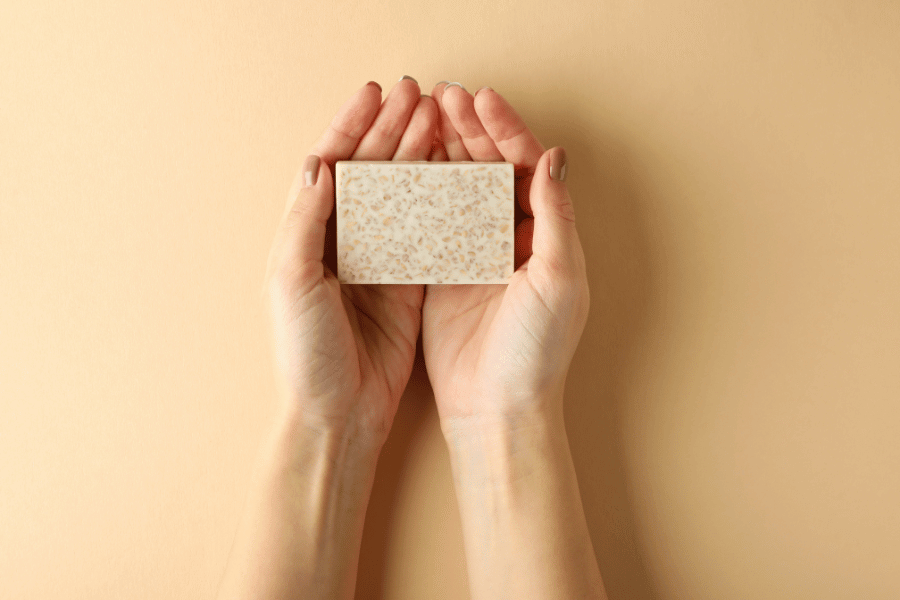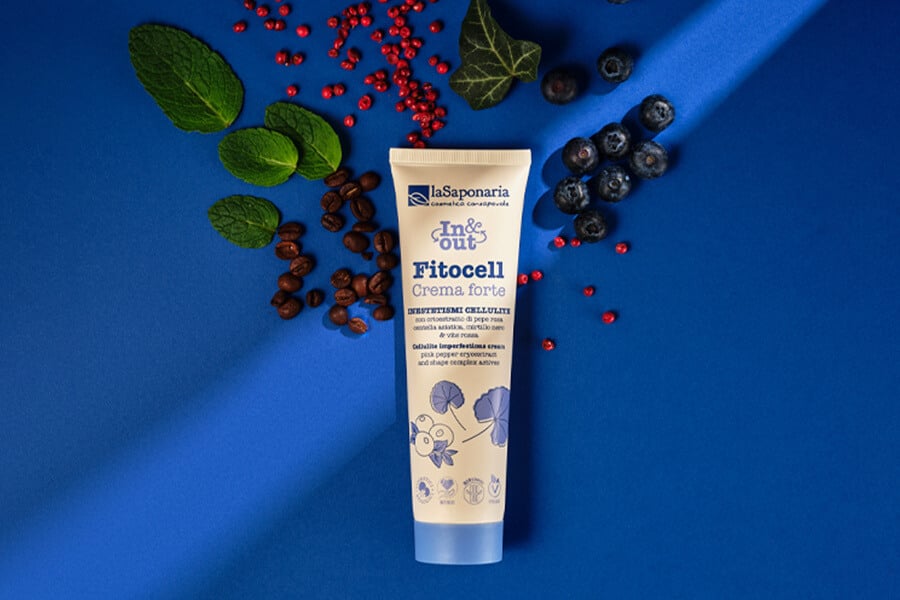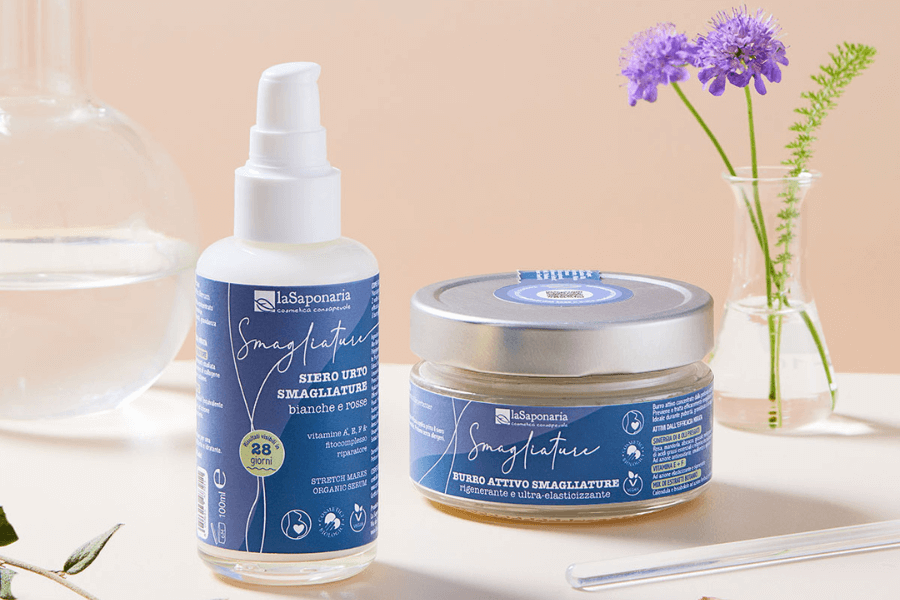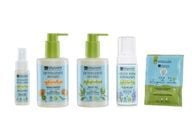DIFFICULTY
INGREDIENTS:
70% di olio di mandorle
30% di olio essenziale di Ylang Ylang
Do you want to perfume your home naturally? Here is a very quick recipe for self-doing a scented home diffuser. This preparation can be easily customized: just vary the type of essential oil and you will always have different fragrances!
Preparation
Mix all the ingredients together by adding one at a time and following the sequence of the ingredient list. Mix them well each time. Pour the scented mix into a narrow-necked bottle and add 8-10 bamboo sticks.
How to use
Leave the air freshener in the room you want to perfume and once or twice a week flip the sticks over.
Tags:
To prepare this recipe
our recipes
all the ingredients
- Acacia
- Active Coal
- Allantoin
- Aloe Vera
- Altea
- Alumina
- Amla
- Ammonium Lauryl Sulfate
- Andiroba
- Apricot Oil
- Argan
- Arginine
- Arnica
- Astragalus
- Astrocaryum Murumuru
- Avocado Oil
- Azelaic Acid
- Babassu
- Bacopa
- Bamboo
- Baobab
- Basil
- Beeswax
- Behenamidopropyl Dimethylamine
- Bentonite Clay
- Benzoic Acid
- Benzyl Alcohol
- Benzyl Benzoate
- Benzyl Salicylate
- Bergamot
- Beta-Caryophyllene (BCP)
- Betaine
- Bhringraja
- Biosaccharide Gum-1
- Biotin
- Bisabolol
- Bitter Orange
- Bixa Orellana
- Blueberry
- Boswellia
- Brassica Campestris/Aleurites Fordi Oil Copolymer
- Burdock
- Buriti Oil
- Butcher's broom extract
- C13-15 Alkane
- Calcium Sulphate
- Camphor
- Candelilla Wax
- Cane sugar
- Caprylic Capric Triglyceride
- Caprylyl Capryl Glucoside
- Carbomer
- Carnauba Wax
- Carrot extract
- Carvone
- Cassia
- Castor
- Centella Asiatica extract
- CeramosidesTM
- Cetearyl Glucoside
- Cetearyl Olivate
- Cetyl Palmitate
- Cetylstearyl Alcohol
- Chicory Prebiotic
- Chlorophyll
- Cinnamal
- Cinnamic Acid
- Cinnamon Essential Oil
- Cinnamyl Alcohol
- Citral
- Citric Acid
- Citronellol
- Clove Essential Oil
- Cocamidopropyl Betaine
- Coco Caprylate/Caprate
- Coco Glucoside
- Coco-Caprylate
- Cocoa
- Coconut Oil
- Codonopsis Pilosula
- Coenzyme Q10
- Coffea
- Copper
- Cornflower
- Coumarin
- Craft Beer
- Crespa Spicata Mint
- Cypress
- Damask Rose
- Dehydroacetic Acid
- Denatured Alcohol
- Dextrin
- Diatomaceous Earth
- Dicaprylyl Carbonate
- Dicaprylyl Ether
- Dill
- Disodium Caproyloyl Glutamate
- Distearoylethyl Dimonium Chloride
- Dodecanoic Acid
- Ectoine
- Emblica
- Ethyl Lauroyl Arginate HCl
- Ethylhexyl Stearate
- Ethylhexylglycerin
- Eucalyptus
- Eugenol
- Extra virgin olive oil
- Farnesol
- Fenugreek
- Flax seed
- Fructooligosaccharides
- Fructose
- Fruit Oligosaccharides
- Fumaria
- Galactoarabinan
- Gamma Oryzanol
- Geraniol
- Geranium
- Geranyl acetate
- Ginger
- Ginkgo Biloba Extract
- Gliceril Stearato Citrato
- Gliceril Stearato SE
- Gluconolactone
- Glucose
- Glycerin
- Glyceryl Caprylate
- Glyceryl Oleate
- Glycolic Acid
- Grapefruit
- Green Clay
- Green Tea
- Guar gum
- Hawthorn and Jasmine of Arabia phytocomplex
- Helichrysum
- Hemp
- Henna
- Henné
- Hexapeptide
- Hibiscus
- Hippophae Rhamnoides Fruit Oil
- Holy Basil
- Honey
- Hop
- Horsetail
- Hyaluronic Acid
- Hydrogenated Starch Hydrolysate
- Hydroxyapatite
- Hydroxystearic/Linolenic/Oleic Polyglycerides
- Hypericum
- Hypericum extract
- Indigo
- Inulin
- Iris
- Iron Oxides
- Isoamyl Laurate
- Isoeugenol
- Ivy
- Jojoba
- Juniper
- Juniper Essential Oil
- Lactate Zinc
- Lactic Acid
- Laurel Oil
- Lauryl Glucoside
- Lauryl Olivate
- Lavender
- Lecithin
- Lemon
- Lemon balm
- Lemongrass
- Lemongrass
- Lespedeza
- Leuconostoc/Radish Root Ferment Filtrate
- Licorice
- Limes
- Limonene
- Linalool
- Linden
- Linoleic Acid
- Liquid Crystal Emulsifier
- Lotus flower
- Macadamia Oil
- Madder extract
- Magnesium Aluminum Silicate
- Magnesium Oxide
- Magnesium Stearate
- Magnesium Sulphate
- Malic Acid
- Mallow
- Maltodextrin
- Mango
- Manioc
- Marigold
- Marine Fermented Extracts
- Marjoram Essential Oil
- Menthol
- Menthyl Lactate
- Mica
- Millet
- Mint Campestre
- Moringa
- Multi prebiotic of Ginger, Grape, Incense
- Myrtle essential oil
- Natural Hydrosaccharide
- Neem Oil
- Nettle
- Niacinamide
- Non-silicone silicone
- Oat
- Officinal Phytocomplex
- Olivamidopropyl Betaine
- Olive Glycerides
- Olive Sorbitan
- Organic Wheat Bran Enzymatic Extracts
- Oryzanol
- Panthenol
- Patchouli essential oil
- PCA Glyceryl Oleate
- Pea synergistic extract
- Pentylene Glycol
- Peppermint
- Perfume
- Phenethyl Alcohol
- Phenoxyethanol
- Phytoretinol
- Pichia Ferment Lysate Filtrate
- Pilosella
- Pineapple
- Pinene
- Pink Pepper
- Plant Collagen
- Polisaccaride naturale
- Polisaccaridi naturali
- Polyglycerin-6
- Polyglyceryl-3 Polyricinoleate
- Polyglyceryl-3 Rice Branate
- Polyglyceryl-4 Caprate
- Polygonum Cuspidatum
- Polyhydroxystearic Acid
- Pomegranate
- Pongamia
- Poppy seeds
- Potassium Hydroxide
- Potassium Rapeseedate
- Potassium Rapeseedate
- Potassium Sorbate
- Propanediol
- Propylene Glycol
- Red Grapes
- Repairing Phytocomplex
- Resveratrol
- Rice Bran Oil
- Rice Powder
- Rice Starch
- Rice Wax
- Rosehip
- Rosehip Oil
- Rosemary
- Rubia
- Saccharide Isomerate
- Saccharomyces Polypeptide
- Sacha Inchi
- Salicylic Acid
- Salvia
- Scots Pine
- Scutellaria Baicalensis
- Seaweed
- Seine
- Selenium
- Shea
- Shikimic Acid
- Silica
- Soap Plant
- Sodium Alkyl Sulphates
- Sodium Anisate
- Sodium Benzoate
- Sodium Bicarbonate
- Sodium Carboxymethyl Starch
- Sodium Chloride
- Sodium Citrate
- Sodium Coco-Glucoside Tartrate
- Sodium Coco-Sulfate
- Sodium Cocoyl Glutamate
- Sodium Dehydroacetate
- Sodium Hydroxide
- Sodium Lactylate
- Sodium Lauroyl Glutamate
- Sodium Lauroyl Lactylate
- Sodium Lauroyl Sarcosinate
- Sodium Levulinate
- Sodium Olivamphoacetate
- Sodium Phytate
- Sodium Pyrrolidone Carboxylic Acid
- Solidago
- Solidago Extract
- Sorbic Acid
- Sorbitol
- Soy
- Spirulina
- Squalane
- Star anise
- Stearic Acid
- Stearoyl Glutamate Sodium
- Succinic Acid
- Sucrose Dilaurate
- Sucrose Laurate
- Sucrose Palmitate
- Sucrose Stearate
- Sugar Beet
- Sugar Maple Extract
- Sunflower
- Sweet Almonds
- Sweet Orange
- Tamarind
- Tamarindus Indica Seed Polysaccharide
- Tangerine
- Tapioca
- Tartaric Acid
- Tea Tree essential oil
- Terpineol
- Tetradecanol
- Tetrasodium Etidronate
- Thyme
- Tin Oxide
- Titanium Dioxide
- Tocopherol
- Tocopherol Acetate
- Tomato
- Triethyl Citrate
- Trisodium Dicarboxymethyl Alaninate
- Turmeric
- Undecanol
- Vanilla
- Venere Rice active water
- Vetiver
- Viola Tricolor
- Vitamin B2
- Vitamin C
- Vitamin E
- Vitamin F
- Walnut husk
- Wheat germ
- Wheat Protein
- White Clay
- White Tea Tree essential oil
- Witch hazel
- Xanthan Gum
- Xylitol
- Yarrow
- Ylang ylang
- Zinc
- Zinc Gluconate
- Zinc Oxide
- Zinc Ricinoleate
the most read recipes
They might to interest

ricette
Slimming gel
<p>Gel that helps fight cellulite and excess fat in a super natural way without attacking the skin!</p>

ricette
Purifying hair mask
<p>A mask that helps the hair get rid of the dirt that settles on its roots and lengths, making it healthier and lighter. In addition, it contains wheat proteins that strengthen it. Especially suitable for oily hair.</p>

ricette
Polenta bergamasca soap
<p>Recipe submitted to the "Saponi e buoi dei paesi tuoi" (Soaps and oxen from your own country) self-production contest. Why does it represent the proverb "Saponi e buoi dei paesi tuoi" (Soaps and oxen from your own country)? Because all the ingredients are typical of the Bergamo region, starting with polenta, a dish that accompanies us in both warm and cold weather, honey, a product that is abundant thanks to the differences that characterize my province... plains, hills, mountains. Extra virgin olive oil, also abundant in the areas of Sarnico, Scanzorosciate, etc... Alfalfa because it can be found in all the fields of the rural areas like those of Martinengo, where I grew up with my grandparents, among herbs like mint and basil... Potatoes are a very typical product of Martinengo... But it was a bit difficult for me to incorporate them into the soap...</p>
































